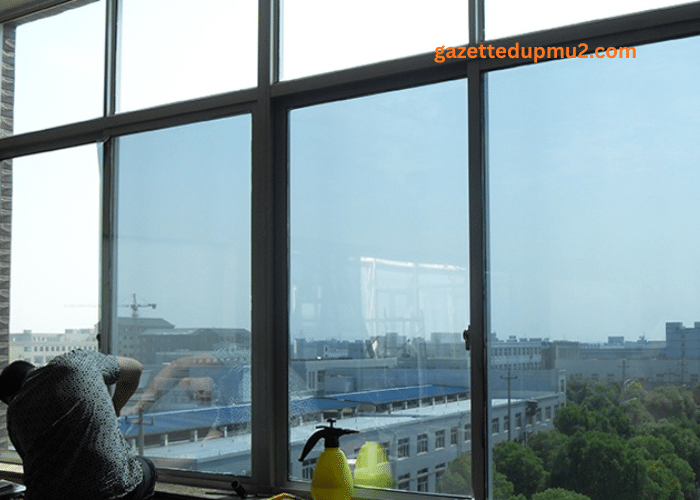In an era where climate change and environmental concerns have taken center stage, the fashion industry is undergoing a transformative revolution. Sustainable style, also known as eco-friendly fashion, is emerging as a powerful force for change, offering consumers the opportunity to make environmentally conscious choices without compromising on style. This article explores the concept of sustainable style and delves into the various facets that make it a critical component of a greener world.
The Urgency of Sustainable Style
The fashion industry has long been synonymous with excess and waste. Fast fashion, characterized by rapidly produced and inexpensive clothing that follows the latest trends, has driven a culture of disposability. This culture contributes significantly to environmental problems, including excessive resource consumption, pollution, and the generation of textile waste.
To appreciate the urgency of sustainable style, one must understand the environmental toll of conventional fashion. The apparel industry is the second-largest polluter globally, just after the oil industry. Its impact spans from water pollution due to chemical dyeing processes to carbon emissions resulting from transportation and manufacturing. Moreover, millions of tons of textile waste are discarded every year, often ending up in landfills or incinerators, further exacerbating the problem.
Sustainable style seeks to address these issues head-on by adopting eco-friendly practices and principles throughout the entire fashion supply chain. It emphasizes responsible production, ethical labor practices, and the use of sustainable materials. By making these changes, it aims to reduce the fashion industry’s ecological footprint while promoting a more ethical and equitable approach to clothing production.
Sustainable Materials
One of the cornerstones of sustainable style is the use of eco-friendly materials. Traditional fashion relies heavily on resource-intensive materials like cotton and synthetic fabrics, which can have a devastating impact on the environment. Sustainable fashion brands are turning to alternative materials that are less harmful and more sustainable.
- Organic Cotton: Conventional cotton farming requires extensive water usage and the application of chemical pesticides and fertilizers. Organic cotton, on the other hand, is grown without synthetic chemicals, making it a more sustainable option. It also promotes healthier soil and reduces the risk of water pollution.
- Hemp: Hemp is a versatile and fast-growing plant that requires minimal water and no synthetic pesticides. It produces strong and durable fibers, making it an excellent alternative to traditional textiles. Hemp cultivation can also improve soil health.
- Tencel and Modal: These are both fibers derived from sustainably sourced wood pulp. They are known for their softness, breathability, and biodegradability. The production process uses a closed-loop system that recycles water and solvents, reducing waste and pollution.
- Recycled Materials: Many sustainable fashion brands are embracing recycled materials, such as recycled polyester, nylon, and even post-consumer waste like plastic bottles. This reduces the demand for new raw materials and minimizes waste.
- Bamboo: Bamboo is a rapidly renewable resource that requires minimal water and no pesticides. It can be used to make soft and comfortable fabrics. However, it’s essential to ensure that bamboo textiles are produced using eco-friendly processes.
- Wool: When sourced responsibly, wool can be sustainable. It’s a natural fiber that is biodegradable and can be produced with minimal environmental impact. Brands are increasingly focusing on ethical and humane treatment of animals in the wool industry.
These sustainable materials not only reduce the environmental impact of fashion but also often result in higher-quality garments that last longer, reducing the need for frequent replacements.
Ethical Production
Sustainable style goes beyond materials; it also encompasses ethical production practices. Traditional fashion often relies on cheap labor, which can lead to exploitative working conditions and unfair wages. Sustainable fashion brands prioritize ethical treatment of workers at every stage of the supply chain.
- Fair Wages: Workers in the fashion industry deserve fair compensation for their labor. Sustainable brands often pay their workers a living wage, ensuring that they can meet their basic needs and enjoy a decent standard of living.
- Safe Working Conditions: Unsafe factories and sweatshops have been the dark underbelly of the fashion industry. Sustainable fashion brands prioritize safe and healthy working conditions for their employees, reducing the risk of accidents and health issues.
- Transparency: Many sustainable fashion brands are transparent about their supply chain, allowing consumers to trace the journey of their garments from raw materials to finished products. This transparency helps ensure that ethical standards are met.
- Local Production: Some sustainable brands opt for local production, which can reduce the carbon footprint associated with long-distance transportation and support local economies.
Ethical production practices not only benefit workers but also contribute to the overall sustainability of the fashion industry. When workers are treated fairly and with respect, they are more likely to take pride in their work, leading to higher-quality products.
Minimal Waste and Circular Fashion
The traditional fashion industry is notorious for generating massive amounts of waste. Fast fashion brands produce clothing at a rapid pace, leading to overproduction and excess inventory. When these items don’t sell, they are often discarded, contributing to the growing problem of textile waste.
Sustainable style advocates for minimal waste and embraces the concept of circular fashion. Circular fashion is an approach that aims to keep clothing and textiles in use for as long as possible, reducing waste and extending the lifespan of garments. Key aspects of circular fashion include:
- Upcycling and Repurposing: Instead of disposing of old clothing, upcycling involves transforming it into new, stylish pieces. This not only reduces waste but also adds a creative dimension to sustainable fashion.
- Repair and Maintenance: Encouraging consumers to repair and maintain their clothing helps extend its life. Sustainable brands often provide repair services or guidance on how to mend clothing.
- Resale and Secondhand Markets: The resale market is booming, with platforms like thredUP and Poshmark making it easy for consumers to buy and sell pre-owned clothing. This reduces the demand for new production.
- Recycling: Recycling textiles into new materials is another important aspect of circular fashion. Innovations in textile recycling are making it possible to turn old clothing into new fibers and fabrics.
- Design for Durability: Sustainable fashion brands prioritize durability in their designs, ensuring that garments last longer and are less likely to end up as waste.
Circular fashion not only reduces waste but also conserves the resources required to produce new clothing. It represents a shift away from the linear “take-make-dispose” model of fashion production towards a more sustainable and responsible approach.
Slow Fashion
The fast fashion model, characterized by quick turnovers of clothing collections and rapidly changing trends, encourages overconsumption and disposability. Sustainable style stands in stark contrast to this approach, advocating for “slow fashion.”
Slow fashion promotes:
- Timeless Design: Instead of following fleeting trends, slow fashion focuses on timeless, classic designs that remain relevant for longer periods.
- Quality over Quantity: Slow fashion emphasizes quality over quantity. Garments are made to last, reducing the need for frequent replacements.
- Mindful Consumption: Slow fashion encourages consumers to be mindful of their clothing purchases. It promotes buying fewer, but hiher-quality items.
- Local and Artisanal Production: Supporting local artisans and small-scale production is a hallmark of slow fashion. This helps preserve traditional craftsmanship and reduces the carbon footprint associated with large-scale manufacturing and transportation.
By embracing slow fashion principles, consumers can build a more sustainable and intentional wardrobe. This shift in mindset encourages thoughtful consumption and reduces the pressure





